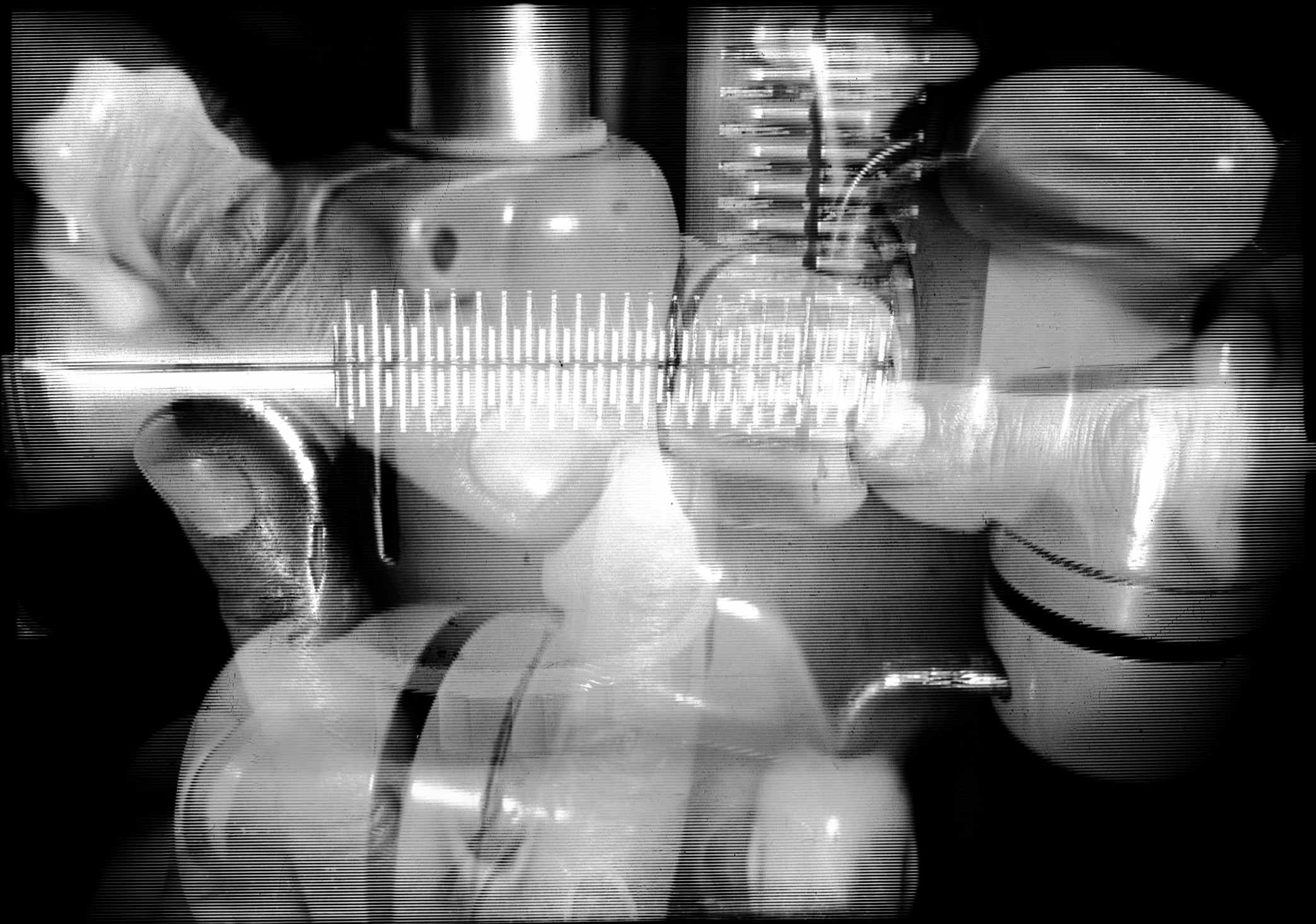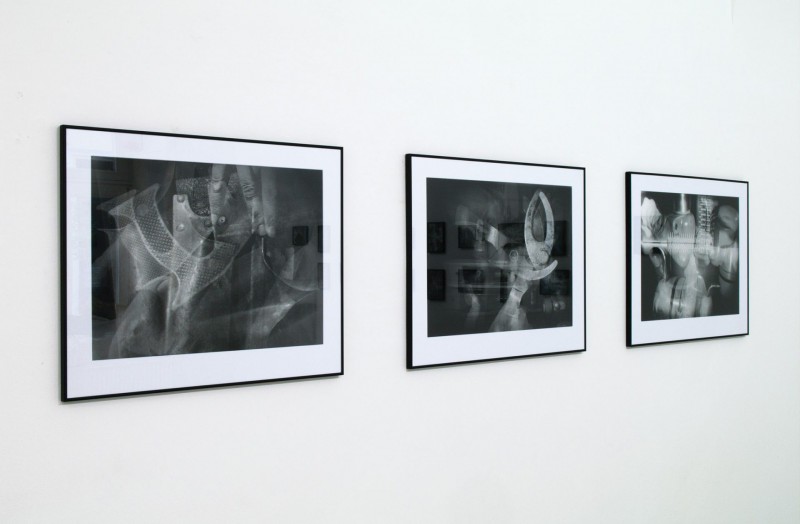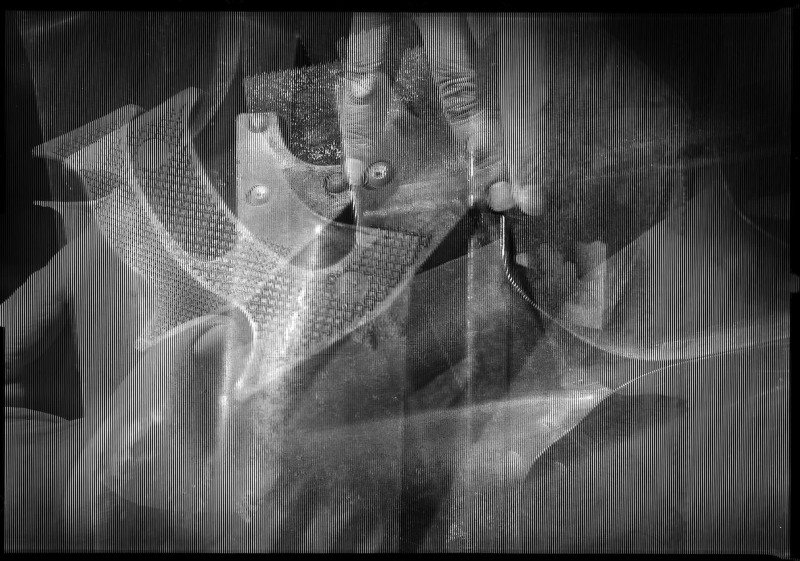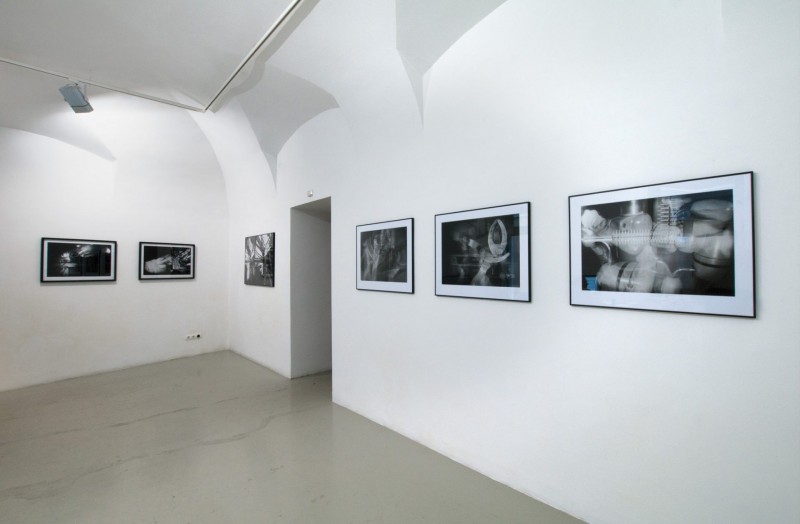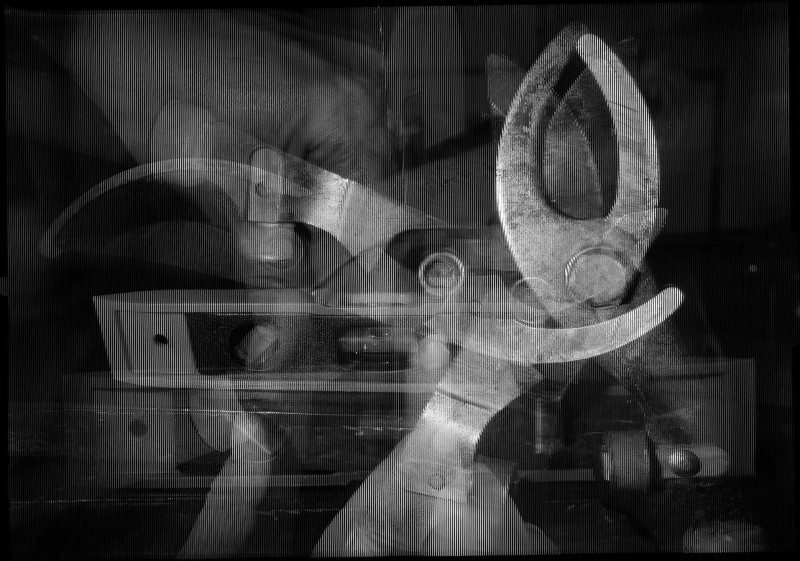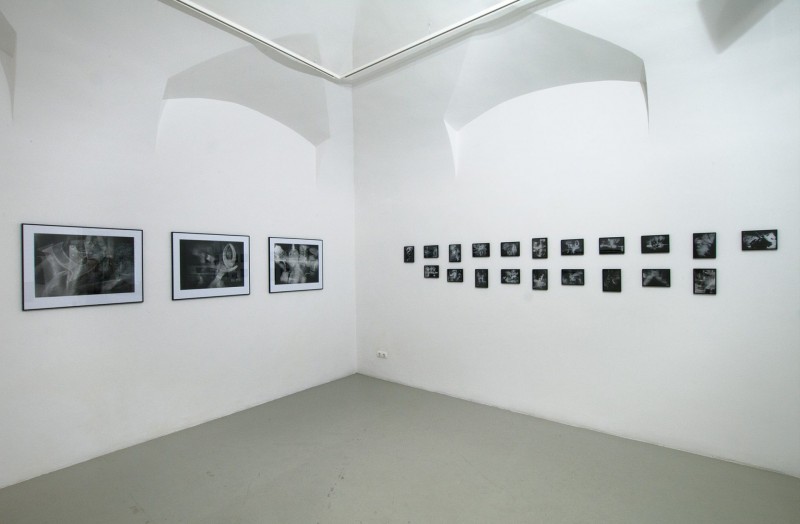Variations on a multi-centred image space
The eye is captivated by the shimmering light that ripples in Zoltán Szegedy-Maszák’s lenticular photographs, following the visitor’s movements. Anyone who approaches the black and white images, which are arranged in two rows and are barely larger than a postcard, will surely be reminded at first glance of the ‘winking wallets’ and the scattered gift cards that show different images when moved back and forth. But beyond the superficial similarities, the differences are far more interesting. While these plastic plates operate with only two images, Szegedy-Maszák has discovered a new type of lenticular process, whereby any number of images can be compressed into a single negative, limited only by perceptual constraints. What is striking is the richness of detail of the objects photographed on top of each other – garden tools and the artist’s hand – and the strangeness of their simultaneous visibility: they are present in parallel rather than obliterated or their layers obscured. When viewed at close enough range, when two different images are projected onto the retinas, stereopsis is created: the viewer perceives a three-dimensional image.
Before anyone thinks of computer manipulation and technical images, it is worth pointing out that the photographs were taken using a traditional analogue process. Szegedy-Maszák placed a thinly grooved lenticular optic, i.e. a transparent plastic plate, on the negative, on which he exposed several times, with the exception of the pair of images that comprise the series. After enlargement, he painstakingly applied the same layer to the surface of the finished gelatin silver images. The grooves in the plastic sheet multiply the extent of the smooth surface, allowing light to refract through them in different ways, thus condensing the information in the image. The image space becomes a repository of photographs that exceeds its physical extent many times over.
Szegedy-Maszák’s meticulously crafted hardware is at once an ironic commentary on the systems of thought that proclaim the objectivity of the image. Instead of abstract planar elements, he uses ordinary, everyday garden tools to evoke the formal language of constructivist photograms, while the fingers that appear in the pictures seem to indicate that he does not wish to abandon his individual signature in favour of avant-garde art history. Only after the lenticular optics have been applied does it become clear what can be seen from a single polygonal photograph. Szegedy-Maszák also touches on magnification, which is why no two photographs are ever the same.
The composition takes shape through applied chance. Chance was Szegedy-Maszák’s assistant in the three photographs taken with a pinhole camera, where the changing light conditions during the long exposure time resulted in unpredictable images. In contrast to the lenticulars, the overlapping layers of these garden scenes cancel each other out, yet the works unite several image spaces. Whether it is two images of the same space, as in the case of What It Means to Photograph, taken with a two-pinhole camera. Or the two pieces in the series My Most Beautiful Summer Experiences, taken with a single pinhole camera, where he created several shots on the same negative. It is worth noting the rudimentary nature of the device: it is the simplest photographic process, the camera is made from a metal tea box.
The title of the series also suggests a criticism of the objectivity of the photograph. The photograph, thought to be objective, is a memory of the past, a moment extracted and fossilised, while experience is a temporal process – sui generis, captured in a single snapshot, a traditional photograph. In the blurs and obliterating overlaps of the multiplied image, however, the undulating stream of experience can be glimpsed.
Gergely Ligetfalvi
